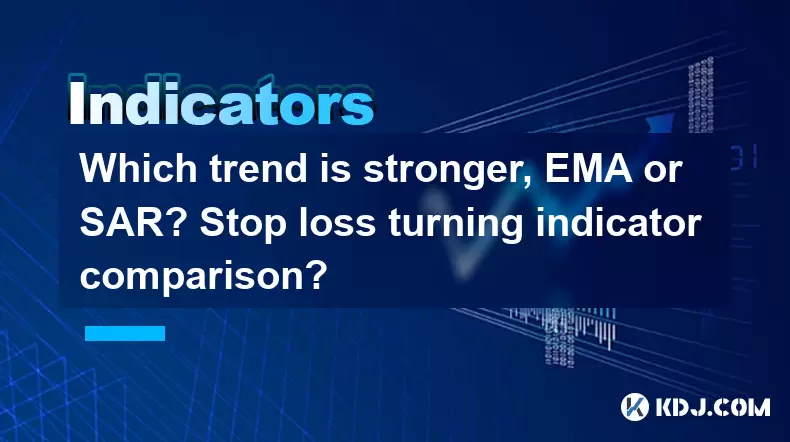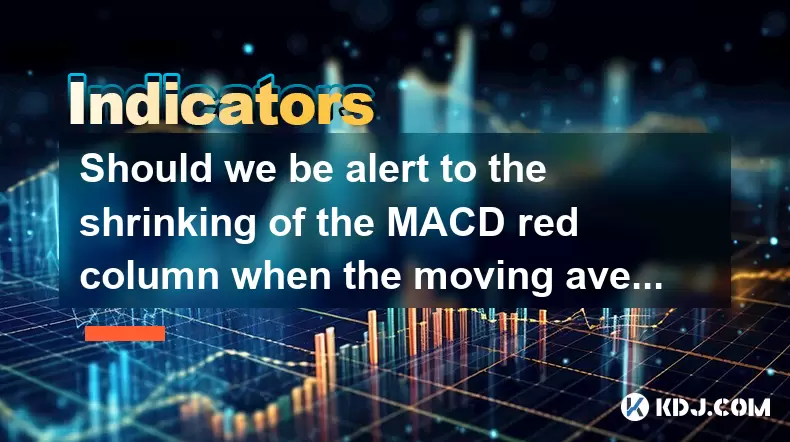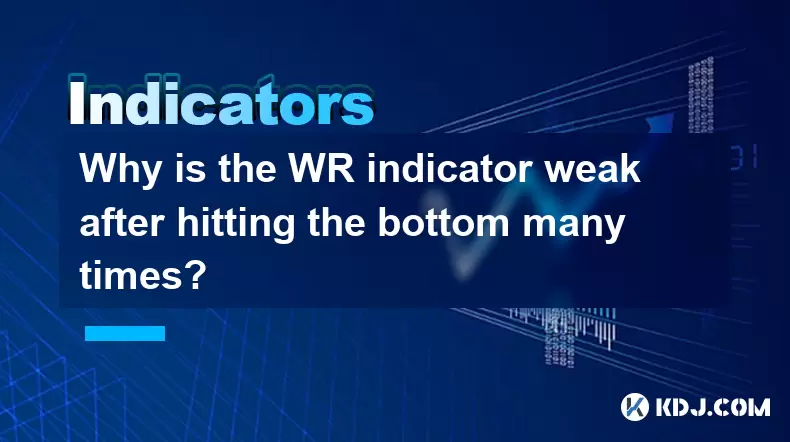-
 Bitcoin
Bitcoin $101,898.5005
-0.75% -
 Ethereum
Ethereum $2,258.1125
-1.07% -
 Tether USDt
Tether USDt $1.0004
0.01% -
 XRP
XRP $2.0178
-2.93% -
 BNB
BNB $624.0243
-1.53% -
 Solana
Solana $134.3298
-0.90% -
 USDC
USDC $0.9999
0.01% -
 TRON
TRON $0.2675
-2.05% -
 Dogecoin
Dogecoin $0.1538
-1.96% -
 Cardano
Cardano $0.5482
-1.11% -
 Hyperliquid
Hyperliquid $35.5636
5.45% -
 Bitcoin Cash
Bitcoin Cash $453.4902
-1.66% -
 Sui
Sui $2.5134
-2.97% -
 UNUS SED LEO
UNUS SED LEO $9.1292
1.77% -
 Chainlink
Chainlink $11.8457
-1.60% -
 Stellar
Stellar $0.2312
-2.73% -
 Avalanche
Avalanche $16.9721
0.29% -
 Toncoin
Toncoin $2.7549
-3.82% -
 Shiba Inu
Shiba Inu $0.0...01081
-1.10% -
 Litecoin
Litecoin $80.8250
-0.71% -
 Hedera
Hedera $0.1374
0.21% -
 Monero
Monero $305.4827
-2.36% -
 Ethena USDe
Ethena USDe $1.0006
0.00% -
 Dai
Dai $1.0000
-0.01% -
 Polkadot
Polkadot $3.2085
-3.12% -
 Bitget Token
Bitget Token $4.0845
-3.13% -
 Uniswap
Uniswap $6.3353
-1.63% -
 Pi
Pi $0.5085
-0.70% -
 Pepe
Pepe $0.0...08913
-3.82% -
 Aave
Aave $232.7090
-0.58%
Which trend is stronger, EMA or SAR? Stop loss turning indicator comparison?
EMA and SAR are key indicators in crypto trading, with EMA better for long-term trends and SAR for short-term trends and dynamic stop losses.
May 23, 2025 at 12:56 pm

In the world of cryptocurrency trading, technical analysis plays a crucial role in helping traders make informed decisions. Among the various indicators used, the Exponential Moving Average (EMA) and the Parabolic Stop and Reverse (SAR) are popular choices for identifying trends and setting stop losses. This article delves into a detailed comparison of these two indicators, focusing on their strengths, weaknesses, and effectiveness in the volatile crypto market.
Understanding EMA and SAR
The Exponential Moving Average (EMA) is a type of moving average that places a greater weight and significance on the most recent data points. This makes the EMA more responsive to new information compared to the Simple Moving Average (SMA). Traders often use different periods for the EMA, such as the 12-day and 26-day EMAs, to gauge short-term and longer-term trends.
On the other hand, the Parabolic Stop and Reverse (SAR) is a trend-following indicator that provides potential reversal points. It appears as a series of dots on a chart, either above or below the price, indicating the direction of the trend. When the dots flip positions, it suggests a potential trend reversal.
Analyzing Trend Strength with EMA
EMA is widely used to assess the strength of a trend in the cryptocurrency market. The sensitivity of the EMA to recent price changes makes it an effective tool for identifying short-term trends. For instance, a 12-day EMA will react more quickly to price movements than a 50-day EMA, making it suitable for traders looking to capitalize on short-term trends.
To use the EMA for trend analysis, traders often look at the crossover of different EMA periods. For example, if the 12-day EMA crosses above the 26-day EMA, it suggests a bullish trend, while a cross below indicates a bearish trend. The distance between the EMAs can also be used to gauge the strength of the trend; a wider gap suggests a stronger trend.
Analyzing Trend Strength with SAR
The SAR indicator is another tool used to identify trend strength and potential reversals. The placement of the SAR dots relative to the price is crucial. When the dots are below the price, it indicates an uptrend, and when they are above, it signifies a downtrend. The rate at which the dots move can also indicate the strength of the trend; faster-moving dots suggest a stronger trend.
Traders often use the SAR to set trailing stop losses. As the price moves in the direction of the trend, the SAR dots will follow, providing a dynamic stop loss level that can help lock in profits while allowing the trade to continue.
Comparing Trend Strength: EMA vs. SAR
When comparing the trend strength indicated by EMA and SAR, it's important to consider their different approaches. EMA focuses on the average price over a specified period, giving a smoother representation of the trend. In contrast, SAR provides a more immediate indication of trend direction and potential reversals.
In terms of trend strength, EMA might be considered more reliable for longer-term trends due to its smoother nature. However, SAR can be more effective for short-term trends because of its responsiveness to price movements. The choice between the two often depends on the trader's time horizon and trading strategy.
Using EMA and SAR for Stop Losses
Both EMA and SAR can be used to set stop losses, but they approach it differently. With the EMA, traders might set a stop loss just below a significant EMA level, such as the 50-day or 200-day EMA. This method provides a clear level that, if breached, suggests a potential trend reversal.
With the SAR, stop losses are set based on the position of the dots. As the price moves, the SAR dots will adjust, providing a dynamic stop loss level that moves with the trend. This can be particularly useful in trending markets, as it allows traders to stay in a position longer while protecting against significant reversals.
Practical Application in Cryptocurrency Trading
To illustrate the practical application of these indicators in cryptocurrency trading, let's consider a hypothetical scenario with Bitcoin (BTC). Suppose a trader is looking to enter a long position on BTC and wants to use both EMA and SAR to assess the trend and set stop losses.
Using EMA: The trader might look at the 50-day and 200-day EMAs. If the 50-day EMA is above the 200-day EMA and the price is above both, it suggests a strong bullish trend. The trader could set a stop loss just below the 50-day EMA to protect against a potential reversal.
Using SAR: The trader would observe the position of the SAR dots. If the dots are below the price and moving upward, it confirms an uptrend. The trader could set a stop loss at the level of the most recent SAR dot, which would move up as the price rises, allowing the trade to continue while protecting against a reversal.
Frequently Asked Questions
Q: Can EMA and SAR be used together in a trading strategy?
A: Yes, EMA and SAR can complement each other in a trading strategy. EMA can provide a smoother, longer-term view of the trend, while SAR can offer more immediate signals for entry and exit points. Traders often use EMA to confirm the overall trend direction and SAR to fine-tune their entry and exit points.
Q: How do EMA and SAR perform in highly volatile cryptocurrency markets?
A: In highly volatile markets, EMA can sometimes provide false signals due to its sensitivity to recent price changes. SAR, being more responsive, may also generate more frequent signals, which can be beneficial for short-term traders but challenging for those with longer time horizons. It's essential to use these indicators in conjunction with other tools and risk management strategies.
Q: Are there specific EMA periods that are more effective for cryptocurrency trading?
A: The effectiveness of EMA periods can vary depending on the cryptocurrency and market conditions. Commonly used periods include the 12-day, 26-day, 50-day, and 200-day EMAs. Shorter periods like the 12-day EMA are more suitable for short-term trading, while longer periods like the 200-day EMA are better for identifying long-term trends.
Q: How can traders adjust their stop loss strategies based on EMA and SAR signals?
A: Traders can adjust their stop loss strategies by setting dynamic stop losses based on the movement of the SAR dots or by using significant EMA levels as fixed stop loss points. For instance, if the SAR dots move closer to the price, traders might tighten their stop loss to protect profits. Conversely, if the price remains above key EMA levels, traders might keep their stop loss further away to allow for more market fluctuations.
Disclaimer:info@kdj.com
The information provided is not trading advice. kdj.com does not assume any responsibility for any investments made based on the information provided in this article. Cryptocurrencies are highly volatile and it is highly recommended that you invest with caution after thorough research!
If you believe that the content used on this website infringes your copyright, please contact us immediately (info@kdj.com) and we will delete it promptly.
- DOGE Recovery Amid US-Iran Tensions: A Market Rollercoaster
- 2025-06-23 20:45:13
- Fiserv, PayPal, and Stablecoins: A New Era of Interoperability?
- 2025-06-23 20:45:13
- Hacken Token's Wild Ride: Minting Exploit and the Cryptocurrency Crash
- 2025-06-23 21:05:12
- Dogecoin, Cloud Mining, and Blockchain: A Meme's Evolution
- 2025-06-23 21:25:12
- Layer 1 Turmoil: CEO Ousted Amidst Scam Allegations
- 2025-06-23 21:05:12
- Solana's Stumble: Price Crash and Network Exodus?
- 2025-06-23 21:25:12
Related knowledge

What is the significance of the gap formed by the gap opening not being filled within five days?
Jun 23,2025 at 09:42pm
Understanding Gaps in Cryptocurrency TradingIn the world of cryptocurrency trading, a gap refers to a situation where the price of an asset jumps from one level to another without any trading activity occurring between those two levels. This often happens over weekends or holidays when the market is closed, and significant news or events occur that impa...

Does the second golden cross of MACD above the zero axis represent the continuation of strength?
Jun 23,2025 at 08:21pm
Understanding the MACD IndicatorThe Moving Average Convergence Divergence (MACD) is a widely used technical analysis tool in cryptocurrency trading. It consists of three main components: the MACD line, the signal line, and the histogram. The MACD line is calculated by subtracting the 26-period Exponential Moving Average (EMA) from the 12-period EMA. The...

Is it effective when the DIF line suddenly crosses the zero axis when the volume is shrinking and the market is trading sideways?
Jun 23,2025 at 07:29pm
Understanding the DIF Line in Technical AnalysisThe DIF line, or the Difference Line, is a critical component of the MACD (Moving Average Convergence Divergence) indicator, widely used in technical analysis across cryptocurrency and traditional financial markets. It represents the difference between the 12-period EMA (Exponential Moving Average) and the...

Should we be alert to the shrinking of the MACD red column when the moving average is arranged in a bullish pattern?
Jun 23,2025 at 08:14pm
Understanding the MACD Red Column and Its SignificanceThe Moving Average Convergence Divergence (MACD) is a widely used technical indicator in cryptocurrency trading. It consists of three main components: the MACD line, the signal line, and the MACD histogram (the red column). The red column represents the difference between the MACD line and the signal...

Why is the WR indicator weak after hitting the bottom many times?
Jun 23,2025 at 07:56pm
Understanding the WR Indicator in Cryptocurrency TradingThe Williams %R (WR) indicator is a momentum oscillator used by traders to identify overbought and oversold levels in the market. It ranges from 0 to -100, with readings above -20 considered overbought and below -80 considered oversold. In the context of cryptocurrency trading, where volatility is ...

Is the shrinking cross star after the historical high a signal of topping?
Jun 23,2025 at 05:56pm
Understanding the Shrinking Cross Star PatternIn technical analysis, candlestick patterns are essential tools for traders to predict potential price movements. One such pattern is the shrinking cross star, which appears as a small-bodied candle with long upper and lower shadows, indicating indecision in the market. When this pattern forms after an asset...

What is the significance of the gap formed by the gap opening not being filled within five days?
Jun 23,2025 at 09:42pm
Understanding Gaps in Cryptocurrency TradingIn the world of cryptocurrency trading, a gap refers to a situation where the price of an asset jumps from one level to another without any trading activity occurring between those two levels. This often happens over weekends or holidays when the market is closed, and significant news or events occur that impa...

Does the second golden cross of MACD above the zero axis represent the continuation of strength?
Jun 23,2025 at 08:21pm
Understanding the MACD IndicatorThe Moving Average Convergence Divergence (MACD) is a widely used technical analysis tool in cryptocurrency trading. It consists of three main components: the MACD line, the signal line, and the histogram. The MACD line is calculated by subtracting the 26-period Exponential Moving Average (EMA) from the 12-period EMA. The...

Is it effective when the DIF line suddenly crosses the zero axis when the volume is shrinking and the market is trading sideways?
Jun 23,2025 at 07:29pm
Understanding the DIF Line in Technical AnalysisThe DIF line, or the Difference Line, is a critical component of the MACD (Moving Average Convergence Divergence) indicator, widely used in technical analysis across cryptocurrency and traditional financial markets. It represents the difference between the 12-period EMA (Exponential Moving Average) and the...

Should we be alert to the shrinking of the MACD red column when the moving average is arranged in a bullish pattern?
Jun 23,2025 at 08:14pm
Understanding the MACD Red Column and Its SignificanceThe Moving Average Convergence Divergence (MACD) is a widely used technical indicator in cryptocurrency trading. It consists of three main components: the MACD line, the signal line, and the MACD histogram (the red column). The red column represents the difference between the MACD line and the signal...

Why is the WR indicator weak after hitting the bottom many times?
Jun 23,2025 at 07:56pm
Understanding the WR Indicator in Cryptocurrency TradingThe Williams %R (WR) indicator is a momentum oscillator used by traders to identify overbought and oversold levels in the market. It ranges from 0 to -100, with readings above -20 considered overbought and below -80 considered oversold. In the context of cryptocurrency trading, where volatility is ...

Is the shrinking cross star after the historical high a signal of topping?
Jun 23,2025 at 05:56pm
Understanding the Shrinking Cross Star PatternIn technical analysis, candlestick patterns are essential tools for traders to predict potential price movements. One such pattern is the shrinking cross star, which appears as a small-bodied candle with long upper and lower shadows, indicating indecision in the market. When this pattern forms after an asset...
See all articles
























































































